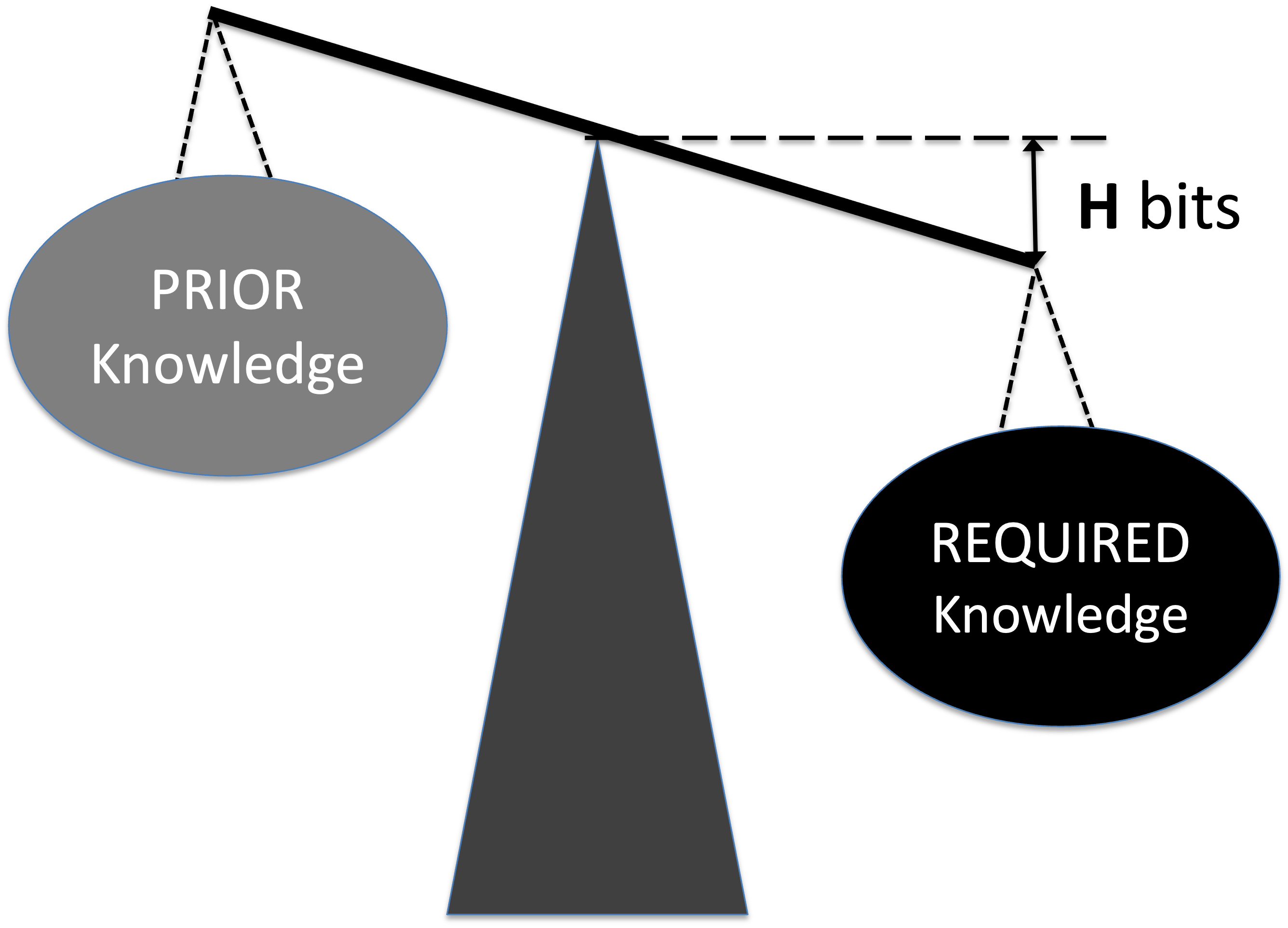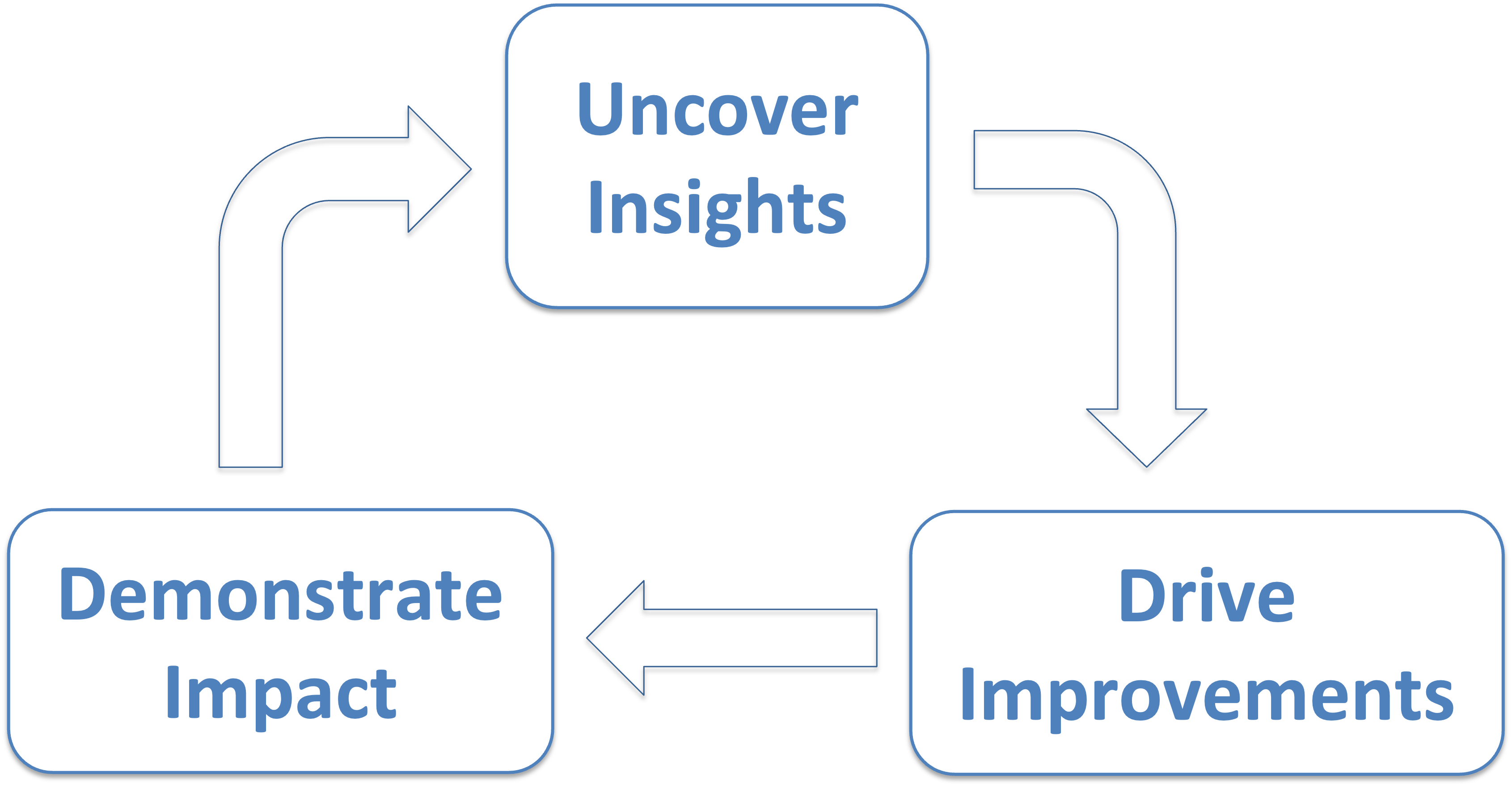What is Knowledge Discovery Efficiency (KEDE)
This is a short read. Here is the detailed version.
Defining KEDE
Work comprises cognitive and manual labor. Manual labor involves physical effort to produce tangible results, while cognitive labor requires thinking and decision-making to address the essential questions of "what," "how," and "why" a task is performed.[2]:
- What needs to be done?
- How should it be done?
- Why is it being done?
Each of these questions can be broken down into increasingly detailed sub-questions. This process continues until a clear understanding is reached, enabling the individual to proceed with manual labor. Importantly, cognitive labor always precedes manual labor because tasks require planning, decision-making, or problem-solving before execution.
For each task, Required Knowledge represents the complexity of the task, i.e. what must be known to complete it, while Prior Knowledge refers to the skills, experience, and understanding an individual already possesses. The gap between these two is the Knowledge to Be Discovered. It represents what the individual thinks they don't know, given what they think they do know. Any uncertainty or need for additional clarity about a task implies the existence of some form of a knowledge gap - even if it is small or subtle.
Questions are the cognitive tools we use to close knowledge gaps. Questions arise only when there is Knowledge to Be Discovered. The existence of any question implies a perceived gap in knowledge, understanding, or certainty. Whether the gap is large (fundamental knowledge is missing) or small (details need confirmation or alternatives are being explored), the act of questioning reflects the Knowledge work i.e. the effort to bridge that gap. Conversely, if an individual believes they know everything necessary about a task, there is no uncertainty, and no questions arise.

- Imagine a scale: on one side is the required knowledge and on the other is the prior knowledge.
- They will be balanced if they are equal, implying that the knowledge to be discovered equals zero.
- When balanced, no further knowledge is needed; when imbalanced, knowledge acquisition is required.
- The gap H between required and prior knowledge is the Knowledge to Be Discovered.
The Knowledge to Be Discovered is measured in bits of information and can take values between 0 and infinity. That is difficult to use for comparing Knowledge to Be Discovered in different contexts. Using mathematics we convert the bits of information H into an efficiency index and define Knowledge Discovery Efficiency or KEDE with values in the range between 0 and 1. KEDE is pronounced [ki:d].
KEDE functions much like a thermometer for an organization, observing it from the outside, akin to a black box.

- A KEDE near 0 indicates a significant knowledge gap or barriers to applying known solutions.
- A KEDE near 100 shows optimal preparation and application of prior knowledge.
- A typical expert software developer might score around 20, indicating a balance between using known methods and learning new ones.
KEDE can provide a reading of your organization's "temperature," but not diagnose the reason for a fever, so to speak. To understand the cause, organizations need a physician - someone who can delve inside the black box, like a manager or coach.
Calculating KEDE
The calculation of KEDE is based on a scientific method for evaluating the efficiency of software development organizations and constitutes patented technology[5][6]. In calculating KEDE, we disregard whether the black box is operated by senior or junior developers, nor do we question the quality of the software produced - we assume it meets appropriate standards.
KEDE is anchored to the natural constraints of the capacity of the cognitive control of the human brain and maximum possible typing speed[3][4]. This association permits comparisons across varying contexts, programming languages, and applications.
KEDE is computed per software developer. However, software developers never work in isolation; they always interact within an organizational context. This organization could be a software development team, a project team, or an entire company. To compute KEDE for an organization, you average the individual KEDE scores of its members. It's crucial to recognize that people often overestimate the influence of individual developers' skills and abilities on knowledge discovery efficiency and underestimate the impact of the system in which they operate.
It is possible KEDE be used as an input to performance reviews and salary negotiations. People would say that because KEDE calculation has as its input number of symbols contributed per hour it will be trivially easy to be gamed by the software developers. Some people could say that a whole company could engage in an effort to game their overall KEDE standing. Considering the above we should recall the McNamara fallacy and the concept of Goodhart's Law and take a systems perspective rather than using KEDE as a single number.
What is the value of knowing KEDE?
KEDE is a general form of a metric for knowledge work. That means for each specific context we have to define a specific way to calculate KEDE. For instance, if we do the knowledge work of a surgeon then both the knowledge discovered and the maximum amount of knowledge that could possibly be discovered need to be measured in a specific way.
Due to its general definition KEDE can be used for comparisons between organizations in different contexts. For instance to compare hospitals with software development companies! That is possible as long as KEDE calculation is defined properly for each context. In what follows we will define KEDE calculation for the case of knowledge workers who produce textual content in general and computer source code in particular.
KEDE is a tool that applies to a variety of contexts and can be used for quantifying the human capital of any organization, as well as indicators such as Collaboration, Cognitive Load, Happiness (Flow State), Productivity(Value per Bit of information Discovered), and Rework (Information Loss Rate). All these metrics, although diverse, can be quantified and evaluated using KEDE. When KEDE increases, it signifies an improvement in these metrics.
| Derived Metric | KEDE Correlation | Desired Trend | Impact on Organization when KEDE increases | How to improve? |
|---|---|---|---|---|
| Collaboration | Positive Correlation | Upward Trend | Improvement in teamwork and communication | Shorten the Feedback Loops |
| Cognitive Load | Negative Correlation | Downward Trend | Reduction in mental strain for developers | Capability Should Match Work Complexity |
| Happiness (Flow State) | Positive Correlation | Upward Trend | Increase in job satisfaction and engagement | Address the Causes of unhappiness |
| Productivity | Positive Correlation | Upward Trend | Enhancement in work output and efficiency | Unleash the untapped human potential |
| Rework as a form of Waste | Negative Correlation | Downward Trend | Reduced delivery time and resources waste | Reduce rework |
The column "Derived Metrics" lists the different aspects that can be evaluated using KEDE. The column "KEDE Correlation" denotes the relationship between the derived metric and KEDE (whether it's a positive or negative correlation). The column "Desired Trend" signifies the preferable direction for each metric (upward or downward). Finally, the "Impact on Organization when KEDE increases" column offers a brief description of how the increase in KEDE would affect each derived metric in the context of an organization.
KEDE is applicable at both the individual and organizational levels.
On the individual level, KEDE addresses critical aspects of developer experience (DevEx):
- Understanding Cognitive Load: In the realm of software development, the mental exertion required to perform tasks (cognitive load) significantly affects a developer's productivity and satisfaction. However, before KEDE, there was no robust and direct way to quantify this cognitive load. KEDE fills this gap by quantifying the knowledge gap that developers encounter when embarking on tasks, thereby indirectly measuring the cognitive load.
- Identifying Flow State (Happiness): Achieving a flow state—where developers are deeply immersed in a task, experiencing energized focus, full involvement, and enjoyment—can greatly enhance productivity and satisfaction. However, identifying when this state is achieved can be challenging. KEDE helps solve this problem by monitoring the discovered knowledge after successful task completion, thereby providing an indicator of whether a flow state has been achieved.
- Assessing Efficiency of Feedback Loops: The efficiency of feedback loops, referring to the speed and quality of responses to performed actions, is a crucial aspect of DevEx. Yet, it's often hard to measure this efficiency directly. KEDE addresses this issue by assessing the efficiency of information acquisition in relation to the number of active contributing software developers. This provides an indirect measure of the speed and quality of feedback loops.
At the organizational level, KEDE aids in evaluating human capital, productivity, and collaboration among developers:
- Evaluating Human Capital: Human capital, often referred to as talent, is a vital intangible asset in today's organizations. Enhancing this capital in knowledge workers directly links to improving efficiency in knowledge acquisition and application. Rather than being static, human capital is dynamic, influenced by human potential, impersonal information sources, collaboration, and efficient work processes. Consequently, it requires active management and is characterized by fluctuations. To measure human capital effectively, we need to assess the Knowledge Discovery process that underpins it. A hallmark of a learning organization is the continual augmentation of its human capital. KEDE quantifies the knowledge gap developers face when undertaking tasks, offering an indirect measure of human capital.
- Measuring Productivity: Software developers apply knowledge in order to deliver outcomes. Much like how cars operate on fuel, software development runs on knowledge. An organization that exhibits superior efficiency in knowledge discovery is likely to produce more working software within the same timeframe. Higher productivity is attained when less knowledge discovery is required to produce an outcome. KEDE quantifies the knowledge developers need to acquire to effectively complete a task, thereby providing the basis for measuring productivity.
- Assessing Collaboration: Collaboration acts as a conduit for knowledge discovery, drawing on personal sources to fill in missing information. This cooperative effort allows developers to disseminate their expertise and uncover novel information that would have remained elusive in isolation. Collaboration can be measured, with the efficiency of a knowledge discovery process, relative to the number of contributing software developers.. Essentially, a more efficient knowledge discovery process signals enhanced collaboration. KEDE assesses the proficiency of information acquisition against the quantity of contributing software developers, thereby providing an indirect measure of collaboration.
Gaining a competitive edge using KEDE
By utilising KEDE, company leadership can uncover insights, drive improvements, and demonstrate impact. It helps identify challenges in your software delivery process, which is the first step towards creating actionable improvement plans.
The improvement process is dynamic and multifaceted, and while I have resources detailing potential changes, each organization will ultimately determine its own transformation journey.

The cycle begins with data-driven insights. We analyse all relevant Git repositories, and then establish the recent performance history as a benchmark. This benchmark serves as a reference point for measuring progress and effectiveness of changes implemented. During the improvement phase, regular assessments (on a weekly or monthly basis) enable companies to validate the impact of their actions. These evaluations allow for comparisons with the benchmark or initial state and discern whether changes are positively or negatively impacting the software development process.
When you start a software development project the best is to establish an iterative process for managing the project constraint which is the ability to discover knowledge. The goal is to increase developer happiness and gain more knowledge per unit time.
Here are a few practical ways you can utilize KEDE to gain a competitive edge:
- Comparative Analysis: KEDE enables you to compare among different functional areas within your company, and even your company's capabilities with industry averages.
- Impact Analysis: KEDE helps in evaluating the effectiveness of significant changes within your organization. Are you curious if the latest restructuring enhanced your company's efficiently? Or if the new hires have actually bolstered your team's potential? KEDE can provide you with objective answers.
- Transformation Analysis: If your team has recently undergone an Agile transformation, KEDE can help you measure if the transformation has actually increased your team's efficiently.
- Objective validation of successful management practices: In a fast-evolving technological landscape, engineering managers face a significant challenge: objectively validating their management practices to foster continuous growth and success. This task, crucial to the professional performance and personal development of various roles within an organization, often proves daunting. KEDE offers successful managers an opportunity to leverage scientific, data-driven insights for validating their effective management practices. It enables leaders to identify potential areas for refinement and aim for even greater success.
In summary, Knowledge Discovery Efficiency (KEDE) allows for a knowledge-centric approach to enhancing the developer experience, productivity, happiness, collaboration, and human capital within software development organizations, ultimately leading to a more effective and motivated workforce.
How to cite:
Bakardzhiev D.V. (2021) What is Knowledge Discovery Efficiency (KEDE) https://docs.kedehub.io/kede/what-is-kede.html
Works Cited
1. Shannon, C. E. (1948). A Mathematical Theory of Communication. Bell System Technical Journal. 1948;27(3):379-423. doi:10.1002/j.1538-7305.1948.tb01338.x
2. Drucker , Peter F, “Knowledge-Worker Productivity: The Biggest Challenge,California Management Review, vol. 41, no. 2, pp. 79–94, Jan. 1999, doi: 10.2307/41165987.x
3. Kahneman D. (1973). Attention and Effort. Englewood Cliffs, NJ: Prentice-Hall
4. Kahneman, D. (2011). Thinking, fast and slow. Farrar, Straus and Giroux.
5. Bakardzhiev, D., Vitanov, N.K. (2025). KEDE (KnowledgE Discovery Efficiency): A Measure for Quantification of the Productivity of Knowledge Workers. In: Georgiev, I., Kostadinov, H., Lilkova, E. (eds) Advanced Computing in Industrial Mathematics. BGSIAM 2022. Studies in Computational Intelligence, vol 641. Springer, Cham. https://doi.org/10.1007/978-3-031-76786-9_3
6. Bakardzhiev, D. V. (2022). U.S. Patent No. 11,372,640. Washington, DC: U.S. Patent and Trademark Office. Online: https://scholar.google.com/scholar?oi=bibs&hl=en&cluster=3749910716519444769
Getting started


